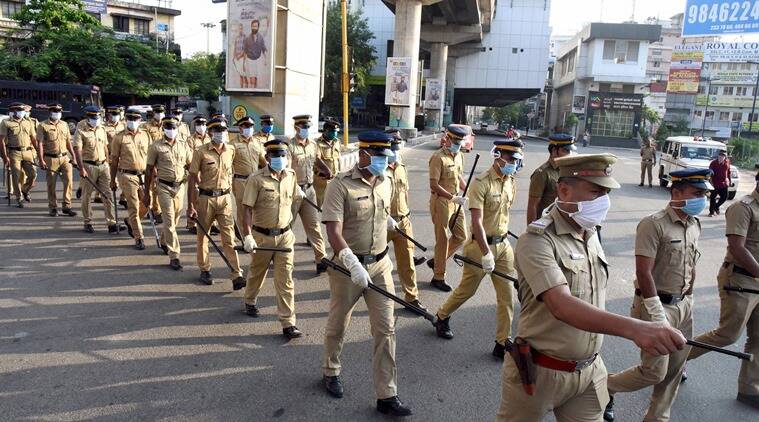Like many, I have watched the fascinating Netflix series ‘Delhi Crime’. Unusually, it is told from the viewpoint of a harassed, overworked and unfairly castigated police force. Arguably, it goes overboard on this theme. Yet, its viewpoint deserves serious attention.
The police are widely hated for being corrupt and callous; for extorting sums from those who come for justice, and even of raping women who come to report rapes; for extorting hafta (weekly payments) from street hawkers and small businessmen; for refusing to register crimes unless bribed; for colluding with criminal gangs; for protecting the favourites and harassing the foes of their political masters; for arresting dissidents and even the patriotic Muslim agitators at Shaheen Bagh on trumped-up grounds of terrorism and sedition; for bumping off supposed criminals in bogus ‘encounters’; and for not checking countless crimes all around us.
The Proof of the Pudding
No amount of sugar-coating through films like ‘Delhi Crime’ will invalidate those criticisms. India has almost the lowest urban labour participation rate in the world (14%) for females above 15, a major reason being that women feel unsafe going out to work. And, yet, the other side of the story needs telling.
India is by no means a safe or wellpoliced country. Yet, tourists will tell you it is far safer than many other developing countries. Most policemen are armed with just lathis (staves). When Pakistani terrorists hit Mumbai in 2008, it came to light that over 90% of Mumbai policemen had never handled a gun. The policeman, Tukaram Omble, who caught the terrorist Ajmal Kasab did so with his bare hands and died in the process, a truly heroic act.
The UN estimates that countries need 222 police per lakh population. India’s sanctioned police strength is 181 per lakh. But massive vacancies mean the actual strength is nearer 140 per lakh, half that of the US. Ironically, Bhutan, the Shangri-La boasting of gross national happiness (GNH), has 500 police per lakh population.
All state governments feel they must dole out ever-rising subsidies to win votes, yet have fiscal limits. So, they save money by simply not filling posts that fall vacant. During Lalu Prasad Yadav’s ‘jungle raj’ in Bihar, police strength fell below 80 per lakh population. Uttar Pradesh in 2016 had an estimated 50% police vacancies. Not even the best police force can control crime if desperately understaffed and deprived of training or resources.
I visited UP in 2017 after Adityanath became chief minister. The department of power said the enormous financial losses of the state distribution companies (discoms) were caused mainly by power theft. Police stations had their hands full with felonies like murder and rioting, and so had no staff to attend to electricity theft. To overcome this, Adityanath ordered that, as in Gujarat, every district should have one police station dedicated to checking electricity theft. When I visited the state three years later, a crestfallen bureaucrat said that the state was still in the process of hiring and training two lakh new constables. But these were urgently needed for existing vacancies, so it would take time to create police stations dedicated to check power theft.
Gunning for Justice
As for lynchings and rapes, the UP Police claimed that in every case the culprits had been arrested and charged. But the courts let them out on bail and the cases dragged on forever. The police had utter contempt for the judicial process.
An impatient Adityanath once swore to simply liquidate bandits through ‘encounters’. This was widely criticised as illegal, but was cheered by voters. In many states, police ‘encounter specialists’ are heroes. The 2004 Nana Patekar-starring film Ab Tak Chhappan, about an encounter specialist who had shot 56 criminals, was so popular that it bred a sequel.
Former Bihar director general (DG) Abhayanand, who helped end Lalu Yadav’s ‘jungle raj’, told me that the entire training and methodology of the Indian police was faulty. They would examine dozens of witnesses (sometimes using ‘third degree’ interrogation), take a year or two to complete interrogations and file chargesheets, and later find that many witnesses reneged on their original statements. Meanwhile, those arrested were let out on bail and intimidated or bribed witnesses. So, the police-judicial system simply did not work. He urged that police training must refocus on sophisticated equipment and high forensic skills to establish crimes, not interrogations that yielded only delays and case dismissals.
The web series ‘Delhi Crime’ shows police officers working non-stop for days because of staff shortages. They lack budgets for even work-related expenses or travel, let alone sophisticated forensic equipment. This is an accurate picture.
Many policemen may be crooks. Yet, I have personally known police officers of unimpeachable integrity, such as Ved Marwah, Hari Pillai and Keki Daruwalla. We have many more such officers. Give them the budgets, the staff, the forensic equipment and training that they need — and that India deserves — and they will do an excellent job.
Of course, that may come to nothing unless the judiciary is reformed to ensure quick verdicts, and politicians stop using the police to harass opponents and dissenters, while protecting crooks in their own ranks.
This article was originally published in the Economic Times on Dec 15, 2020.
Read more: Does Property Rights Help Only the Rich and Powerful?
Post Disclaimer
The opinions expressed in this essay are those of the authors. They do not purport to reflect the opinions or views of CCS.




